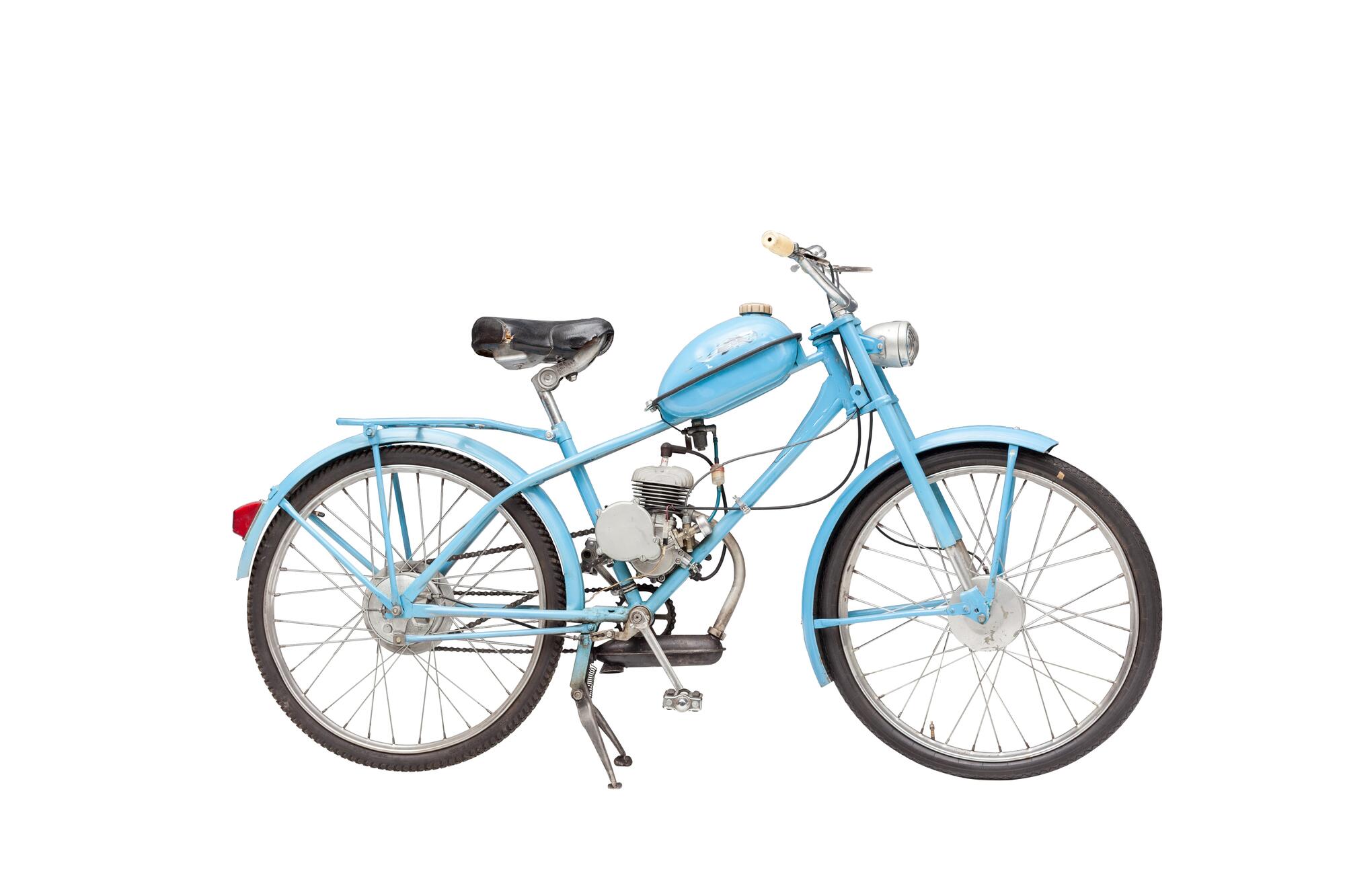The Riga-7 moped was first introduced in the “Novye Tovary” (New Goods) magazine in February 1968. The article indicated an approximate price of 130 rubles. In 1969, the Sarkanā Zvaigzne Factory in Riga produced the first moped of this type, and by late 1971, the new model had completely replaced its predecessor, the Riga-5.
The new moped was equipped with a D6 engine that could also be used to power the headlight and tail light. The designers removed the decorative protective covers of the drive chains. A special rail was added to prevent damage to the frame in case of rapid braking.
According to the technical specifications, the moped had a weight of 36 kg, a maximum weight load of 100 kg, and a ground clearance of 130 mm. It could reach a speed of up to 40 km/h. At 30 km/h, the moped had a fuel consumption rate between 1.8 and 2.0 liters per 100 kilometers in summer, with a fuel capacity of 5.5 liters.
The designers used a welded tube frame. The front suspension consisted of a telescopic fork with shock absorber springs. The rear suspension was rigid, and the wheels had drum brakes with separate actuators. The braking distance of both brakes at 25 km/h was 7 meters.
The moped was equipped with a two-stroke carburetor engine cooled by natural air flow. It had a maximum brake power of 0.9 kW or 1.2 hp at 4,500 rpm. The maximum torque was 29 Nm. To get the engine started, the rider had to use the pedals. The designers equipped the Riga-7 with a single-speed transmission and a double-disk dry friction clutch.
According to the vehicle’s documentation, the manufacturers warranted fail-safe operation for a period of one year after the sale, provided that the mileage was under 5,000 km. They recommended using a fuel/oil mix of 20 parts gasoline to 1 part oil.
The designers suggested using a frame that had an improved rear suspension without a rail. They conducted both bench and field tests, and their suggestion was adopted. However, in 1976 the Riga-7 was taken out of production and replaced by the new Riga-11.
The new moped was equipped with a D6 engine that could also be used to power the headlight and tail light. The designers removed the decorative protective covers of the drive chains. A special rail was added to prevent damage to the frame in case of rapid braking.
According to the technical specifications, the moped had a weight of 36 kg, a maximum weight load of 100 kg, and a ground clearance of 130 mm. It could reach a speed of up to 40 km/h. At 30 km/h, the moped had a fuel consumption rate between 1.8 and 2.0 liters per 100 kilometers in summer, with a fuel capacity of 5.5 liters.
The designers used a welded tube frame. The front suspension consisted of a telescopic fork with shock absorber springs. The rear suspension was rigid, and the wheels had drum brakes with separate actuators. The braking distance of both brakes at 25 km/h was 7 meters.
The moped was equipped with a two-stroke carburetor engine cooled by natural air flow. It had a maximum brake power of 0.9 kW or 1.2 hp at 4,500 rpm. The maximum torque was 29 Nm. To get the engine started, the rider had to use the pedals. The designers equipped the Riga-7 with a single-speed transmission and a double-disk dry friction clutch.
According to the vehicle’s documentation, the manufacturers warranted fail-safe operation for a period of one year after the sale, provided that the mileage was under 5,000 km. They recommended using a fuel/oil mix of 20 parts gasoline to 1 part oil.
The designers suggested using a frame that had an improved rear suspension without a rail. They conducted both bench and field tests, and their suggestion was adopted. However, in 1976 the Riga-7 was taken out of production and replaced by the new Riga-11.




